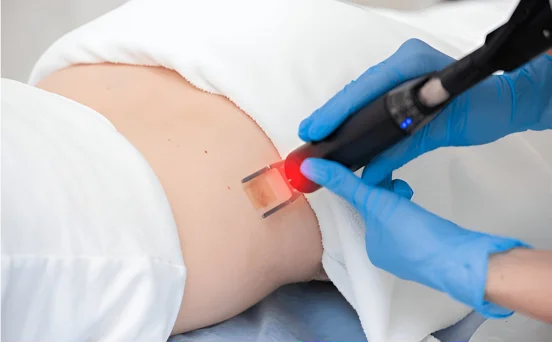Laser surgery represents a remarkable advance in modern medicine, relying on extremely focused beams of light to target tissues with incredible precision. Because it avoids the need for scalpels in many procedures, it is generally less invasive than traditional surgery, allowing patients to heal more quickly and experience less post-operative discomfort. Over the past few decades, laser technology has matured rapidly, making it a trusted option in fields as wide-ranging as eye care, skin treatment, cancer management, dental work, and cosmetic enhancement.
From reshaping corneas to erasing birthmarks and shrinking tumors, lasers now play a central role in many clinical settings. Yet prospective patients often wonder what specific problems lead health professionals to choose a laser approach over more conventional methods.
The causes for laser surgery can vary widely depending on the specific condition being treated, but understanding these factors can help patients make informed decisions about their care.
Understanding the Causes for Laser Surgery
Laser surgery is far from a universal remedy. Physicians typically reserve it for conditions where the special qualities of lasers— such as their pinpoint accuracy, ability to minimize bleeding, reduction in pain, and shortened recovery time— truly shine. Here are some of the most frequent medical and aesthetic situations that prompt a recommendation for laser intervention:
- Vision Correction :- Near-sightedness, far-sightedness, astigmatism, and aging eyes. Procedures such as LASIK and PRK gently reshape the cornea, directing light more precisely onto the retina. For many people who rely on glasses or contacts, the result is clearer vision and the freedom to see without lenses every morning. It’s no wonder these treatments have become household names around the world. LASIK, PRK, SMILE, wavefront-guided
- Skin Renewal :- Acne scars, sun damage, age-related spots, wrinkles, tattoos, and vascular birthmarks. By passing focused beams through the upper skin layers, laser resurfacing lifts away old cells while encouraging new collagen to form. The skin then looks smoother, firmer, and more even-toned. Because of this dual rejuvenating effect, dermatologists often recommend lasers as a cornerstone of modern cosmetic care. Fractional laser, CO2 laser, Erbium laser, tattoo-clearing, photo-facial
- Targeting Tumors :- Early lesions in the cervix, lungs, esophagus, skin, and elsewhere. Laser light can precisely cut away or zap tumor tissue while sparing nearby healthy cells. This extraordinary precision makes lasers a valuable tool when doctors are working alongside chemotherapy or radiation therapy. Patients appreciate the reduced impact on surrounding organs and, often, faster recovery times.
- Enlarged Prostate (Benign Prostatic Hyperplasia – BPH) :- For many men, the prostate simply grows larger with age, a change known as BPH. Techniques such as HoLEP—short for Holmium Laser Enucleation of the Prostate—can remove the overgrown tissue with remarkable accuracy. This targeted approach typically means less bleeding, quicker recovery, and much relief from troublesome urinary symptoms when compared to older surgical methods. HoLEP, GreenLight laser therapy.
- Kidney Stones :- When chemicals in the urine crystallize, they sometimes form stones that are too big to slip through the urinary tract. In cases where stones refuse to budge, laser lithotripsy steps in. A tiny fiber is threaded up through the urethra and bladder, delivering concentrated bursts of light that shatter the stone into grains small enough to pass comfortably. It’s especially handy for stubborn stones hiding deep within the kidney or ureter. Laser lithotripsy, ureteroscopy with laser.
- Glaucoma :- Slowly rising pressure inside the eye can squeeze the optic nerve, setting the stage for vision loss. Gentle laser treatments such as trabeculoplasty or iridotomy create channels that help the eye’s natural fluid drain, relieving pressure without major surgery. By keeping that pressure down, these procedures buy time and help maintain the patient’s precious sight.
- Retinal Disorders :- Conditions such as diabetic retinopathy or a torn retina can put your eyesight in serious danger. That’s where retinal lasers come into play. During a quick outpatient procedure, the laser seals up small rips or zaps fragile blood vessels, stopping leaks that threaten to blur or block vision. Many people with diabetes or age-related changes find this treatment gives them a fighting chance to keep seeing well. You might hear doctors call it laser photocoagulation or just retinal laser therapy.
- Vascular Lesions and Varicose Veins :- If you’re bothered by bulging veins, broken capillaries, or even a birthmark that seems to pulse, laser therapy is a popular fix. The concentrated beam targets only the flawed vessels, making them collapse and eventually fade while the surrounding skin stays completely unharmed. Because it’s so gentle yet effective, specialists often use the technique to tidy up facial veins, spider veins on the thighs, or large varicose veins in the legs. You might come across terms like endovenous laser treatment or simply laser vein removal on brochures.
- Gynecological Conditions :- In the delicate arena of women’s health, lasers offer a precise and minimally invasive alternative for several bothersome conditions. Whether getting rid of abnormal cervical cells, moderating heavy menstrual bleeding, or peeling away painful endometrial lesions, surgeons rely on lasers to make clean cuts without tearing tissue. This accuracy helps shorten recovery times and limits scar tissue, both of which can matter a lot in gynecological care. Look for phrases like laser conization or endometrial ablation when you talk to your doctor about options.
- Dental Procedures :- Dentists increasingly keep a laser handy for everyday mouth problems, and patients are usually glad they did. The beam can painlessly contour gums, remove cavity decay, or brighten enamel during a single visit. Because lasers minimize bleeding and instantly seal tiny wounds, the mouth often heals faster than it would after traditional drill work. If you’ve ever dreaded the whir of the dental drill, you’ll appreciate trade names like soft-tissue laser or simply laser dentistry.
Common Names: laser gum surgery, soft-tissue laser treatment
Why Patients Prefer Laser Treatment
- First off, it’s minimally invasive. Surgeons won’t have to make a big incision, which many people find reassuring.
- Because of that smaller opening, patients experience less bleeding and pain. The laser seals blood vessels as it cuts, so the surrounding tissue is left relatively undisturbed.
- A quick procedure often turns into a lightning-fast recovery. Most people are surprised at how soon they can get back to their daily routine.
- Precision is another big plus. The beam can target tiny areas without harming the adjacent gums, which is especially useful in delicate spots.
Finally, most treatments are done in the office. Patients leave the same day, avoiding the hassle of overnight hospital stays.
Conclusion
In short, laser surgery has changed the treatment landscape. What started in eye clinics is now helping with everything from tumors to sun-damaged skin, and even managing chronic problems like glaucoma and benign prostate enlargement.
That said, laser therapy isn’t one-size-fits-all. Always sit down with your dentist or physician first; they’ll review your case, weigh the benefits against the risks, and guide you toward the option that matches you best.
As engineers and doctors push the technology forward, you can expect the list of treatable conditions to keep growing—solidifying lasers as a cornerstone of modern medicine.























